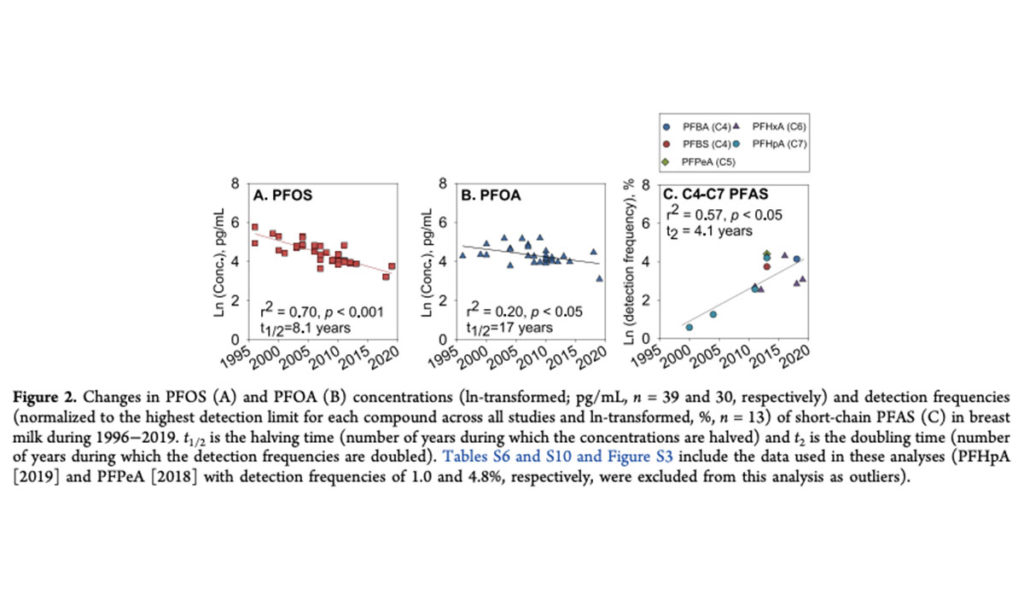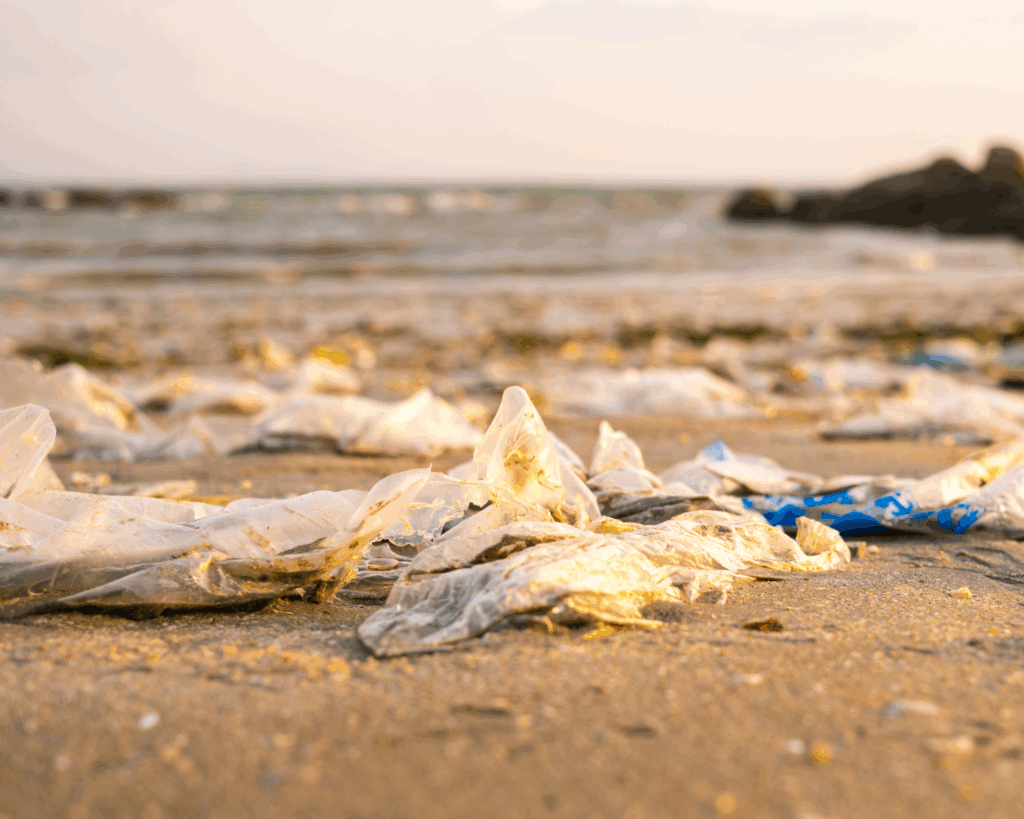Forever in Breastmilk
Researchers evaluated PFAS - the forever chemical - in breastmilk samples from 1996 to 2019.

Read Time: 3 minutes
Published:
PFAS, also known as “forever chemicals,” are a group of more than 6,000 chemicals that — due to their water, stain, and grease repelling properties — have been used widely across industries for more than 80 years. The problem with these “forever chemicals” is that they cannot be metabolized: they stay in the body forever. PFAS, entering our bodies through water, food and air, can be found in blood, menstrual blood, urine, and breastmilk.
Since 2006, two major forever chemicals (PFOA and PFOS) have been phased out of use in consumer products. “However, that does not mean that these chemicals are no longer here, there is no ban on importing PFOA and PFOS into the U.S., and there are forms of PFAS that are being produced that can breakdown into PFOA and PFOS,” explain Jennifer Schlezinger and Wendy Heiger-Bernays, of the Boston University School of Public Health environmental health department.
PFOA and PFOS were quickly replaced with a slightly different version of PFAS with chemical features that their manufacturers argue make PFAS safer for human consumption. “The idea behind this was that the shorter carbon-chain PFAS could be removed from the body more quickly than the longer chain PFAS. We know less about the toxicology of these newer PFAS, but a growing body of evidence suggests that we should be concerned about the toxicity of replacement PFAS as well,” say Schlezinger and Heiger-Bernays. PFAS cause several types of cancers, thyroid disease, and weakening of the immune system. These new types of PFAS, just like the ones phased out, also accumulate in the body, and in breastmilk.
Guomago Zheng and colleagues evaluated PFAS in breastmilk across time by collecting samples since 1996. They found that overall concentrations of PFOA and PFOS in breastmilk declined by 19% and 37% respectively from 1996 to 2019 as shown in the first and second graphs below. However, they also found that the number of people who had measurable levels of shorter chain PFAS has tripled since 1996. This is shown in the third graph below.

Babies and children are particularly susceptible to any exposure because of their rapid development. “Organs and tissues that are growing and developing are more susceptible to toxic effects than mature organs and tissues,” explain Schlezinger and Heiger-Bernays. “Children more highly exposed to PFAS in early life generate fewer antibodies in response to standard childhood vaccinations than those less exposed. Additionally, there are studies that show that infants who scored below the median on gross motor development had higher PFAS concentrations than infants with better gross motor development.”
An alternative to breastfeeding is formula-feeding. However, scientists believe that formula-fed babies face higher levels of exposure than breastfeed babies. This occurs because drinking water, used to mix with formula, is contaminated with PFAS.
The solution is not to stop feeding babies. Instead, organizations across the United States are advocating for less PFAS in our environment in light of its continuing proliferation. Schlezinger and Heiger-Bernays explain “PFAS are chemicals that should be regulated at the federal level by the U.S. Environmental Protection Agency. Unfortunately, the chemicals industry has been highly successful at lobbying – essentially preventing regulation. The EPA has only set drinking water advisory levels for PFOA and PFOS, which are not legally enforceable. PFAS in drinking water are being regulated at the state level. Only nine states have established enforceable standards for maximum allowable levels of PFAS in drinking water.”
Photo via Getty Images



